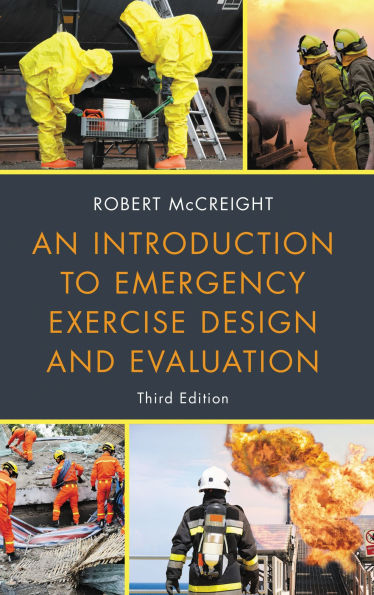The fourth edition of An Introduction to Emergency Exercise Design and Evaluation is designed to help practitioners and students of emergency management understand various aspects of the exercise design process. It provides a unique perspective since it is the first edition published since the COVID-19 pandemic. It arrives in 2023 looking back almost four years on the issues and challenges emergency managers faced on the threshold of a new decade in 2020. Since then, the country has faced the COVID pandemic along with at least twenty-four weather related disasters that killed and injured hundreds.
Emergency exercises are an important component of an organization's emergency planning and preparedness, yet few emergency managers and practitioners have training in designing or evaluating them. In this updated and practical handbook, the author explains the essential elements and core principles of exercise design and evaluation. This fourth edition of An Introduction to Emergency Exercise Design and Evaluation focuses on natural disasters and technological emergencies that occur in communities of any size. It provides emergency planners, public health professionals, emergency managers, police officers, and fire fighters with an in-depth look at exercise design issues and an accessible guide to designing and evaluating emergency exercises. This edition includes a new material on what to expect in emergency management through 2030.
1124480907
Emergency exercises are an important component of an organization's emergency planning and preparedness, yet few emergency managers and practitioners have training in designing or evaluating them. In this updated and practical handbook, the author explains the essential elements and core principles of exercise design and evaluation. This fourth edition of An Introduction to Emergency Exercise Design and Evaluation focuses on natural disasters and technological emergencies that occur in communities of any size. It provides emergency planners, public health professionals, emergency managers, police officers, and fire fighters with an in-depth look at exercise design issues and an accessible guide to designing and evaluating emergency exercises. This edition includes a new material on what to expect in emergency management through 2030.
An Introduction to Emergency Exercise Design and Evaluation
The fourth edition of An Introduction to Emergency Exercise Design and Evaluation is designed to help practitioners and students of emergency management understand various aspects of the exercise design process. It provides a unique perspective since it is the first edition published since the COVID-19 pandemic. It arrives in 2023 looking back almost four years on the issues and challenges emergency managers faced on the threshold of a new decade in 2020. Since then, the country has faced the COVID pandemic along with at least twenty-four weather related disasters that killed and injured hundreds.
Emergency exercises are an important component of an organization's emergency planning and preparedness, yet few emergency managers and practitioners have training in designing or evaluating them. In this updated and practical handbook, the author explains the essential elements and core principles of exercise design and evaluation. This fourth edition of An Introduction to Emergency Exercise Design and Evaluation focuses on natural disasters and technological emergencies that occur in communities of any size. It provides emergency planners, public health professionals, emergency managers, police officers, and fire fighters with an in-depth look at exercise design issues and an accessible guide to designing and evaluating emergency exercises. This edition includes a new material on what to expect in emergency management through 2030.
Emergency exercises are an important component of an organization's emergency planning and preparedness, yet few emergency managers and practitioners have training in designing or evaluating them. In this updated and practical handbook, the author explains the essential elements and core principles of exercise design and evaluation. This fourth edition of An Introduction to Emergency Exercise Design and Evaluation focuses on natural disasters and technological emergencies that occur in communities of any size. It provides emergency planners, public health professionals, emergency managers, police officers, and fire fighters with an in-depth look at exercise design issues and an accessible guide to designing and evaluating emergency exercises. This edition includes a new material on what to expect in emergency management through 2030.
109.8
In Stock
5
1

An Introduction to Emergency Exercise Design and Evaluation
230
An Introduction to Emergency Exercise Design and Evaluation
230eBook (Third Edition)
$109.80
Related collections and offers
109.8
In Stock

Product Details
| ISBN-13: | 9781641433914 |
|---|---|
| Publisher: | Bloomsbury Publishing |
| Publication date: | 05/02/2019 |
| Sold by: | Barnes & Noble |
| Format: | eBook |
| Pages: | 230 |
| File size: | 8 MB |
| Age Range: | 18 Years |
About the Author
What People are Saying About This
From the B&N Reads Blog
